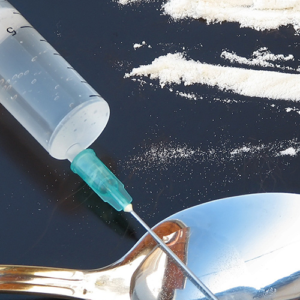04 May Fulton County: State of Emergency
Table of Content

Fulton County State of Emergency Due to Heroin Epidemic
Heroin use in the United States has been prevalent for decades. The nation experienced a big surge of use during the 1970s and since then, drug abuse has continued to be a countrywide presence into the 21st century. In 2014, a reported 47,055 died from drug overdose, which is now the number one cause of accidental death in the country.
One of the areas that has been most deeply affected is Fulton County. The drug problem in Georgia has become so increasingly severe that at the turn of the new year, Fulton County officials gave the state a hard dose of reality by acknowledging that Atlanta and its surrounding suburbs are “in the midst of a heroin epidemic.”
Data over the past few years has been brimming with statistics showing significant spikes in heroin fatalities year over year. In 2010, four people died from heroin overdoses in Fulton County. Just five years later that number skyrocketed to 82. At the rate the county is seeing deaths attributed to heroin overdoses, researchers forecast nearly 300 heroin-related deaths by 2021.
The majority of these deaths stem from the zip codes encompassing Vine City and English Avenue where The Bluff is located. The Bluff has been named in the top five of most dangerous neighborhoods in America and is deemed the most dangerous neighborhood in Atlanta.
It might be shocking to know it’s not only the residents of the 30314 and 30318 zip codes who are becoming part of these statistics but those who drive through and buy from the area as well. People all over the city know The Bluff as a heroin marketplace. When you’re looking for drugs, it’s the place to go.
Kevin Baldwin, one of the researchers and authors of a recent study exploring the rise of heroin use in Atlanta, namely North Fulton County, said, “90 percent of the people who initiate heroin use are white males between the ages of 18 and 25. In more affluent areas, people are starting younger.”
However, the ease of which people can access heroin is a problem that is spilling out of the inner city neighborhoods like The Bluff and into suburbia.
Baldwin goes on to say, “Five years from now we’ll see over 1,000 deaths in Fulton County from heroin-related overdoses. This suggests that we have a brief window of opportunity to get out ahead of the heroin problem in North Fulton and the surrounding metro area.”
By 2013, according to the Centers for Disease Control and Prevention, the rate of heroin-related deaths had nearly quadrupled since 2002 reaching 14,000 reported incidents of overdose deaths in 2014.
Additionally, the American Society of Addiction Medicine reported over 21 million Americans, 12 years or older, suffered from substance abuse in 2014. Of the several million affected, 586,000 people were linked to heroin abuse and an estimated 23 percent of heroin users developed an addiction.
Despite the data-based evidence, the epidemic may not be one everyone is ready to face quite yet. Baldwin explains, “Some Police Chiefs expressed concern that the general public remains in denial about the extent of the problem that heroin poses to their communities…Ed Densmore, Chief of the Johns Creek Police Department, references the significant heroin problem in his community and states further that “nobody wants to face the issue that it is here. We’re in denial, as if we’ve stuck our head in the sand. It’s here. Whether you respond to one death or 20 deaths, it’s a death, and it is totally preventable.”
What Led to the Epidemic?
 Heroin abuse has received nationwide attention and is a topic that has hit especially hard in the state of Georgia and has significantly affected Fulton County specifically. There’s not just one contributor to this epidemic. Many factors have created what is now viewed as a state of emergency.
Heroin abuse has received nationwide attention and is a topic that has hit especially hard in the state of Georgia and has significantly affected Fulton County specifically. There’s not just one contributor to this epidemic. Many factors have created what is now viewed as a state of emergency.
What was once a problem only for the poverty-stricken neighborhoods of the city has now found itself in the middle to upper class of residents. Fifty-three percent of heroin-related deaths occurred in North Fulton or the suburbs surrounding Atlanta.
In 2013, the Community Epidemiology Work Group (CEWG) researched patterns and trends of drug use in Atlanta. One of the primary findings was the increase in the availability of Mexican heroin in this region of the U.S. Drug reports revealed heroin objects seized rose from 512 in 2012 to 813 in 2013.
It’s not only the border towns of Texas and California facing a mass of problems with cartels and illegal drugs being smuggled in and distributed throughout local cities. The rise of Mexican drug cartels has been an ever looming presence in Atlanta as well.
In 2008, city law enforcement confiscated approximately $70 million in drug-related cash, an amount that totaled more than anywhere else in the U.S., remarkably more than Chicago at $18 million and Los Angeles at $19 million the same year.
Over the years, Atlanta has become a hub for trafficking of Mexican cocaine, methamphetamine, cocaine, and heroin before being sent up the East Coast. One of the prime reasons cartels have targeted this area is due to its proximity to other main cities and highways. Drug trafficking is easier, and distribution is extended.
The growth of the Hispanic population in Atlanta has also played a part in the rise of drug presence in the area. In a decade, from 1990 to 2000, the population jumped in Gwinett County from approximately 8,500 Hispanic residents to 63,000. In 2010, the projected Hispanic population was 20 percent of the county’s 700,000 residents. With the increase of Hispanics in the area, it’s been reported drug dealers are more easily able to “hide” among law-abiding citizens.
With increase in drug trafficking and crime comes an increase in violence and danger. Two of the most power Mexican cartels, the Sinaloa and the Gulf, have been linked to an increase in violent crime in Atlanta due to battles over drug territories.
The Sinaloa cartel was the topic of headline news when its leader, drug lord “El Chapo,” made another prison escape in 2015 followed by a subsequent shootout and recapturing in early 2016, all while the cartel continued to run operations across the U.S.
Drug trafficking and drug abuse aren’t limited to affecting only the ones directly involved. It disrupts communities, negatively affects the economy, puts stress on law enforcement, endangers neighborhoods, and ruins relationships. With the strong presence of the Mexican cartels in Atlanta, everyone is impacted. The epidemic touches everyone.
John Horne, U.S. Attorney for the North District of Georgia, said of this growing epidemic, “The Mexican cartels have displayed a disturbing ability to replace the fields that they grew marijuana with poppies. Atlanta is a distribution hub for Mexican cartels … so they are in our suburbs using our community as a repackaging and redistribution location for all manners of drugs. Now, included in the methamphetamine and the cocaine and the marijuana is cheap, potent heroin.”
In an investigative report by Channel 2 Action News, reporter Mark Winne followed this story of Mexican cartel infiltration to the border. There he and his colleagues were told that customs had seen an increase of heroin smuggling across the border by over 100 percent over all eight points of entry in Texas. In the Laredo field office alone, Border Patrol seized roughly 2,600 pounds of heroin in 2013.
As part of the same journalistic investigation, Channel 2 News also uncovered reasons behind the skyrocketing number of overdose deaths due to the rise of heroin in Atlanta. What they found is people are starting at a younger age experimenting with and abusing heroin.
One woman spoke out saying, “I want the public to know that this is an epidemic. You can live in the nicest suburbs of Atlanta, Cobb, Cherokee, and it’s there. My sister was literally able to go down the street and find heroin.”
The woman, Jennifer Echols, with her family, had to make the difficult decision of ending life support for her 24-year-old sister who had slipped into a coma due to a heroin overdose.
Kids from affluent areas are abusing drugs more and more, simply because heroin is easier to get, less expensive, and has a stronger potency now more than ever. How cheap is it? For a single dose, heroin can be purchased for $10 or less, a far cheaper alternative and much easier to come by than an opiate-based prescription.
Drug trafficking has permeated throughout the suburbs and has taken hold of college students who find no difficulty in tracking down heroin. A few stories and several statistics connect becoming addicted to pain medication as the tipping point towards heroin abuse.
It’s a different type of demographic than what’s associated with The Bluff. Any ordinary person could have been in a car accident, suffered a severe sports injury, or had a routine surgery when legally prescribed pain medication, which they later become addicted to. As a result, they crave the drug to help ease their pain. Heroin fills the space.
DeKalb, Gwinnett, and Cobb counties all saw spikes in death from overdoses in 2012, but it was Fulton County that reported the biggest increase in heroin-related deaths rose to 31 in 2013 when it was 24 the year before.
In the suburban neighborhoods of Atlanta, 20-year-olds are inviting drug dealers to their homes, allowing them to meet their friends to sell heroin. They don’t have to drive the dangerous streets of The Bluff. They can have access to it right in the proximity of their street or easier yet, right in their own home.
Now that Fulton County has entered this state of emergency, what can be done to stop this epidemic?

Seeking Treatment for Addiction
When drug abusers can no longer afford pain medication or are no longer being prescribed it for medical reasons, heroin becomes their drug of choice to deal with the withdrawal symptoms, according to the Centers for Disease Control and Prevention in Atlanta.
The difference in cost when transitioning from prescription medication to heroin is alarming. As previously mentioned, a bag of heroin can run $10-$15 when a prescription for Oxycontin can run about $80. Once addicted on either, however, cost becomes less and less of a factor.
Addiction is real. It doesn’t always happen the way you think it will, in a strange neighborhood, faced with an out-of-character decision. Sometimes it happens in the safety of your home, due to a need to alleviate pain. Drug abuse has led many down a dark, difficult path and sadly, in a rising number of cases, has resulted in death.
We at Georgia Drug Detox believe in facing this epidemic head on. Treatment and rehabilitation are the only sustainable options to help the county in this current state of emergency. We serve as the first step in finding a solution that’s right for those who need help. We are dedicated to doing our part to stop the cycle of addiction.
Treatment comes in varying forms and requires steadfast support. Patients who make the decision to battle their addiction and achieve sobriety can do so under the supervision of caring medical professionals who are well-versed in helping people through the withdrawal symptoms that are so painful for most.
By entering treatment, there is built-in assistance to take patients through detox, rehabilitation, recovery, and relapse when necessary. Programs are designed to overcome heroin addiction and addiction to other drugs, but also to empower people with the tools they need to stay strong and sober.
If you or someone you love is battling heroin addiction, know there is help waiting for you. Reach out to Georgia Drug Detox and get the support you need today.
Sources:
“Stop Opioid Abuse.” FultoncountyGA.gov. 4 March 2019. http://www.fultoncountyga.gov/soa-home
“Fulton County Commissioners Approve Funding of Anti-Heroin Overdose Drug.” FultoncountyGA.gov. 4 March 2019. http://www.fultoncountyga.gov/latest-news/7856-fulton-county-commissioners-approve-funding-of-anti-heroin-overdose-drug-
Boone, Christian. “District Attorney: Heroin Abuse at a “Crisis” Level in North Fulton.” AJC. 15 Jan. 2016. 4 March 2019. https://www.ajc.com/news/crime–law/district-attorney-heroin-abuse-crisis-level-north-fulton/4K4lzijACrwhYWJrXvW0kI/






No Comments